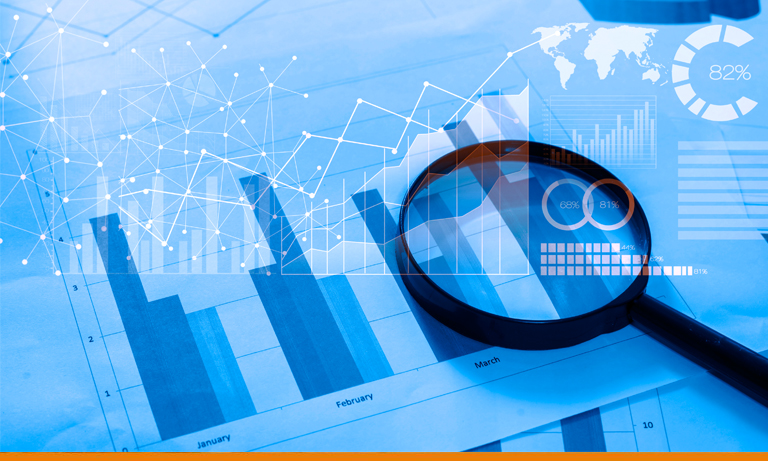Telehouse for Technophiles: How Data Centers Empower Big Data
October 12, 2016As Big Data Increasingly Influences Our Personal and Professional Lives, Data Centers Play an Integral Role
We’ve all been there. You log into Facebook and are greeted by dozens of ads for iPhone 7 accessories when just yesterday you were scouring Amazon for a new OtterBox. Later that evening, after a weekend of binge-watching “Making a Murderer,” you turn on Netflix to see a wide selection of crime documentaries and suspense thrillers on your watch list. What gives?
In light of your viewing habits, you could be forgiven for seeing some dark conspiracy in this sequence of events, and in a way, you’re right — although the motive is entirely benevolent. Well beyond our daily purview, vast amounts of data are now being used to enhance end-user experience and streamline sales, marketing and customer relations programs. The advent of Big Data has allowed organizations to process information in ways that were once unthinkable.
Big Data refers to extremely large datasets that are difficult to analyze with traditional tools, which includes unstructured data or information that doesn’t reside in a traditional row-column database. Unstructured data is comprised of both text and multimedia content such as e-mail, Microsoft Word documents, videos, photos, audio files, PowerPoint presentations and webpages. While Big Data can include both structured and unstructured data, research firm IDC estimates that 80 to 90 percent of the Big Data in most organizations is unstructured. IDC forecasts the Big Data market will increase to $32.4 billion in 2017 from just $3.2 billion five short years ago.
The Big Deal about Big Data
Big Data analytics technology is transforming financial services, healthcare, automotive, education and a host of other industry sectors. Helping companies store, process and analyze massive quantities of unstructured data has positively influenced everything from supply chain operations to product development.
Walmart, the number one company on the 2016 Fortune 500 list and the world’s largest retailer, is not only a big user of Big Data analytics but also one of the first companies to utilize large quantities of data to increase revenue. Walmart revolutionized the retail industry by recording product availability as data, allowing suppliers to manage and monitor sales, inventory and gross profit margins.
While the retail sector has greatly benefitted from Big Data analytics, use of this technology reaches far beyond the sales floor and e-commerce. Rolls Royce has used Big Data to great success in its aircraft engine manufacturing division, collecting data from engine sensors to predict potential points of failure. In the agriculture sector, crop fields are being mapped with GPS coordinates to track multiple data variables, including soil and elevation. The collection and analysis of this data allows farmers to fine-tune planting tools and monitor growth in real-time to produce a higher yield.
Big Data’s Impact on the Data Center
This year, global internet traffic will surpass more than a zettabyte of data due, in part, to the increasing adoption of Big Data analytics, and it’s only growing. In order to accommodate vast quantities of data and analytics, data centers’ storage systems require the ability to scale-out without sacrificing performance, a goal which many facilities achieve by implementing a flash-based storage system, an electronic form of memory commonly found in mobile devices.
Many web-scale organizations such as Google, Facebook and Apple run what are known as hyperscale computing environments. TechTarget defines these as systems that are capable of rapid, efficient expansion to handle massive quantities of data from web-serving, database, data analysis, high-performance computing and other applications. Many industry leaders predict that in coming years this storage architecture will crossover from these web-scale giants and enter the mainstream marketplace.
Latency is also a critical consideration for data center infrastructure in order to avoid data becoming stale and to enable access to real-time information necessary for businesses to make real-time decisions. Given that Big Data analytics are implemented across multiple platforms and host systems, interoperability is also necessary.
One of the most significant challenges that data centers face given the proliferation of Big Data analytics is maintaining reliable security of information. In order to secure unstructured data, the safest technique is to employ Attribute-Based Encryption (ABE) within third-party storage such as a colocation facility. This type of public-key encryption protects sensitive data by applying access controls based on the attributes of the data itself rather than the environment in which it is stored.
Whether the goal is to offer retail customers a more personalized experience, predict the next trend in Over-the-Top entertainment, keep our skies safer, or feed the world, Big Data is revealing and influencing how we live, work and play, and data centers have an integral role in realizing these objectives.
Telehouse facilities offer dedicated data center suites designed to meet the requirements of Big Data analytics, including power-protection, enhanced security, environmental controls and connectivity with a high level of privacy and flexibility.


